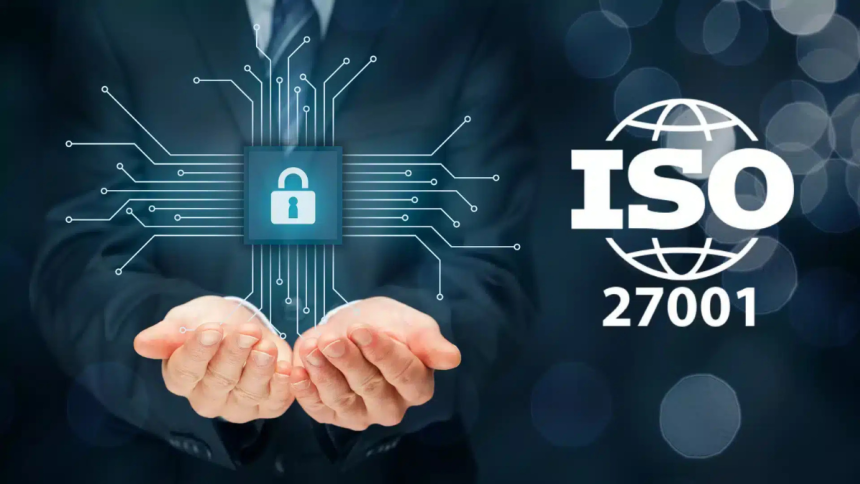Organizations face mounting pressure to protect sensitive information while maintaining operational efficiency. iso 27001 certification provides a comprehensive framework that transforms chaotic security efforts into structured, measurable processes. This internationally recognized standard helps businesses develop systematic approaches to identifying, assessing, and managing information security risks across all operations.
The certification process creates lasting organizational changes that extend far beyond basic compliance requirements. Companies implementing ISO 27001 discover improved operational efficiency, enhanced customer relationships, and stronger competitive positioning. These benefits emerge from the standard’s emphasis on continuous improvement and risk-based decision making.
Systematic Risk Identification and Assessment
ISO 27001 requires organizations to conduct thorough risk assessments that examine every aspect of their information handling processes. This comprehensive approach ensures that potential vulnerabilities are identified before they can be exploited by malicious actors or cause operational disruptions.
The risk assessment process examines both technical and human factors that could compromise information security. Organizations must evaluate their technology infrastructure, physical security measures, and employee behaviors to create a complete picture of their security posture. This holistic view enables management teams to prioritize security investments based on actual risk levels rather than assumptions or incomplete information.
Regular risk reviews ensure that security measures remain relevant as business operations evolve and new threats emerge. Organizations must continuously monitor their environment and update their risk assessments to reflect changing circumstances. This dynamic approach prevents security programs from becoming outdated or ineffective over time.
Documentation requirements create clear records of risk assessment decisions and their underlying rationale. This transparency enables future reviews and helps organizations learn from past experiences while building institutional knowledge about effective risk management practices.
Structured Control Implementation
The ISO 27001 framework provides organizations with a comprehensive set of security controls that address common information security risks. These controls are organized into logical categories that make it easier for organizations to implement comprehensive security programs without overlooking critical areas.
Control selection is based on risk assessment results, ensuring that security measures are proportionate to actual threats and business requirements. Organizations can focus their resources on the most important risks while avoiding unnecessary complexity or expense in low-risk areas.
Implementation guidance helps organizations translate abstract security concepts into practical policies and procedures that employees can understand and follow. Clear documentation ensures that security controls are consistently applied across different departments and locations.
Regular monitoring and measurement activities verify that implemented controls are functioning as intended. Organizations must establish metrics that demonstrate control effectiveness and identify areas where improvements may be needed. This evidence-based approach ensures that security investments provide real value rather than creating false confidence.
Enhanced Incident Response Capabilities
ISO 27001 requires organizations to develop formal incident response procedures that enable rapid detection, containment, and recovery from security incidents. These structured processes help minimize the impact of security breaches while ensuring that lessons learned are captured and applied to prevent future incidents.
Incident classification systems help organizations prioritize their response efforts based on the severity and potential impact of different types of security events. This systematic approach ensures that resources are allocated appropriately and that critical incidents receive immediate attention.
Communication protocols ensure that relevant stakeholders are notified promptly when security incidents occur. Clear escalation procedures prevent delays that could worsen the impact of security breaches or create additional complications for recovery efforts.
Post-incident reviews provide opportunities to identify improvements in security controls or response procedures. Organizations must analyze each incident to determine whether existing controls were adequate and whether additional measures are needed to prevent similar incidents in the future.
Strengthened Vendor and Partner Relationships
ISO 27001 certification demonstrates to business partners that an organization takes information security seriously and has implemented appropriate safeguards. This third-party validation can accelerate contract negotiations and open doors to new business opportunities that require demonstrated security capabilities.
Supply chain security requirements help organizations evaluate and manage the security risks associated with third-party vendors and service providers. The standard requires systematic assessment of vendor security practices and ongoing monitoring of third-party relationships.
Contractual security requirements ensure that partners and vendors understand their responsibilities for protecting shared information. Clear agreements help prevent misunderstandings about security expectations and provide legal recourse if security requirements are not met.
Regular vendor assessments verify that third-party security practices remain adequate over time. Organizations must monitor their vendor relationships and take corrective action if security standards decline or new risks emerge.
Improved Business Continuity and Resilience
The ISO 27001 framework requires organizations to consider how information security incidents could impact business operations and develop appropriate continuity plans. This integrated approach ensures that security measures support business objectives rather than creating unnecessary obstacles.
Backup and recovery procedures protect critical business information from loss or corruption. Organizations must implement systematic approaches to data protection that ensure business operations can continue even if primary systems are compromised or unavailable.
Alternative processing arrangements enable organizations to maintain essential functions during extended outages or disasters. The standard requires planning for various scenarios that could disrupt normal operations and developing practical solutions for maintaining service delivery.
Testing and validation activities ensure that business continuity plans will function effectively when needed. Organizations must regularly test their recovery procedures and make necessary adjustments based on test results and changing business requirements.
Competitive Market Advantages
Organizations with ISO 27001 certification can differentiate themselves from competitors by demonstrating measurable commitment to information security. This certification provides concrete evidence of security capabilities that can be valuable in competitive bidding situations and customer evaluations.
Market access opportunities often require formal security certifications before organizations can participate in certain sectors or geographic markets. ISO 27001 certification removes barriers that might otherwise prevent businesses from pursuing attractive opportunities.
Premium pricing justification becomes possible when organizations can demonstrate superior security practices that provide additional value to customers. The certification helps justify higher prices for services that include enhanced security protections.
Customer retention improves when organizations can provide ongoing assurance about their security practices. Regular certification maintenance demonstrates sustained commitment to security excellence rather than one-time compliance efforts.
Long-term Organizational Benefits
ISO 27001 certification creates lasting organizational capabilities that provide ongoing value beyond the initial certification period. The systematic approach to information security management becomes embedded in organizational culture and continues to drive improvements over time.
Employee security awareness increases through regular training and clear policy communication. Staff members become active participants in maintaining security rather than passive recipients of security requirements they may not fully understand.
Lynn Martelli is an editor at Readability. She received her MFA in Creative Writing from Antioch University and has worked as an editor for over 10 years. Lynn has edited a wide variety of books, including fiction, non-fiction, memoirs, and more. In her free time, Lynn enjoys reading, writing, and spending time with her family and friends.















